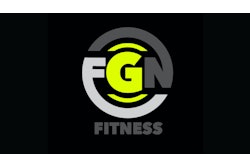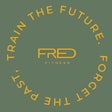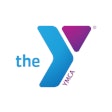A variety of options are available for yoga classes and certifications.
"I'm addicted to yoga," a friend of mine once said, and I think that statement reflects the fitness industry as a whole. Yoga, particularly hatha yoga, is a staple in many fitness enthusiast's lives. No matter what brought them to yoga, be it stress, a desire for increased flexibility, body awareness, strength or just curiosity, there is a style of yoga that suits most everyone. Most yoga enthusiasts in the U.S. practice some form of hatha yoga or a combination of forms. If your fitness center offers Ashtanga, power, Iyengar or even a class simply called hatha yoga, your members are practicing a form of yoga that is thousands of years old and incorporates hundreds of positions, or asanas. The Yoga Journal defines hatha yoga as a "forceful yoga" emphasizing postures, breath control and cleansing techniques. Whether your members choose a class that is vigorous or more relaxing, they are sure to challenge their muscles and minds. They become more aware of themselves, their body and how far they can push themselves. Like personal training and group fitness instruction, yoga instructors have recognized the importance of a reputable certification or teacher training and continuing education for both their students' and their own safety. There are a variety of yoga forms in which to become certified. Instructors may choose to study Iyengar or Ashtanga and apply to study in India. They may choose to stay in the U.S. and gain instruction through a certification body like YogaFit, Hermosa Beach, Calif. Or, they may choose a newer hybrid form of yoga, such as Yogilates, which incorporates vinyasa (fluid movements) and Pilates. Whatever forms of yoga you offer at your facility, you will be well serving your members and your fitness center.
Iyengar
John Schumacher, owner of Unity Woods Yoga Centers in the Washington, D.C., metropolitan area (www.unitywoods.com) and certified Iyengar instructor and trainer, knows the challenges of practice and certification of Iyengar yoga. "It is rigorous and time-consuming," he says. Students are expected to study for years under a certified, experienced teacher before even beginning their two-year teacher training program, or apprenticeship. Then they must be recommended by two Iyengar instructors to take the first of two levels of assessments before they can consider themselves certified. After that initial certification, which Schumacher estimates can be completed in no less than three years, there are 12 additional certification levels to go. Most don't make it all the way through. Iyengar yoga differs from other forms of yoga in that it brings attention to the detail, precision and refinement of poses, and a series of props to assist, if necessary. Poses are held for a longer period of time than in other forms of yoga. Iyengar also incorporates breath control in a more natural inhalation and exhalation way into its more than 200 structured poses. Students and teachers alike are drawn to Iyengar for a variety of reasons: its strength, meditative qualities and the dedication it requires to master. Schumacher says people who are drawn to Iyengar yoga are, "studious not just about doing, but about understanding 'why?' They have an analytical bend, a sense of critical analysis and discrimination, ... a love for the art and science of Iyengar." For more information, visit the Iyengar Yoga's National Association of the United States website at www.iynaus.org.
Ashtanga (Astanga)
Ashtanga yoga (www.ashtanga.com) is a challenging, athletic form of yoga. It uses the vinyasa system of matching the posture to the cadence of the breath using deep breathing, or "ujjayi pranayama," (differing it from breathing in Iyengar), and jumping in and out of poses. Students follow a formal sequence and six different series of postures, making Ashtanga a challenging form of yoga to memorize and practice. This series, along with the breathing technique, is a signature of the Ashtanga practice. Certification in Ashtanga yoga requires several trips to the Ashtanga Yoga Research Institute (www.ayri.org) over a number of years, where the teacher first becomes authorized and then certified in Ashtanga. Much like other forms of yoga, you'll find trainings in the U.S., but those who complete the trainings are not recognized as "real" Ashtanga teachers. Only those who have completed the certification process in Mysore, India, earn that honor.
Sample certifications
As challenging as yoga certifications can be (and expensive, with the overseas travel), fitness professionals looking to become trained and certified in yoga can find a variety of well-respected programs right here in North America. The teacher trainings and certifications mentioned here are just a sampling of what fitness professionals will find. Most of these programs meet the Yoga Alliance's 200- and/or 500-hour Registered Yoga Teacher (RYT) requirement. The Yoga Alliance (www.yogaalliance.com) is a voluntary registry of yoga schools and instructors that strives to maintain the integrity of yoga by ensuring teachers have plenty of course and practical training to effectively instruct yoga. YogaFit. YogaFit (www.yogafit.com), the largest yoga certifier in the U.S., incorporates all that yoga has to offer in spirituality and mindfulness, with a focus on, as founder Beth Shaw calls it, "the nuts-and-bolts issue of teaching yoga in a health club." Many forms of yoga are so strenuous that "they only belong in their own brand of studio," says Shaw. YogaFit approaches yoga from a fitness perspective in that the students' safety, inclusion no matter the fitness level and positive feelings are all as important as the spiritual journey. With YogaFit, students move through a series of movements that mix traditional fitness moves with traditional yoga postures and use "user-friendly" terms as opposed to Sanskrit names for postures. There are four levels of training through YogaFit, as well as trainings for teaching children, pregnant women, older adults and the incorporation of Pilates. YogaFit is the only recognized yoga continuing education provider for the American Council on Exercise (ACE) and Aerobics and Fitness Association of America (AFAA). YogaFit is also the only yoga certification body recommended by ACE. YogaFit recommends its instructors get a fitness certification through ACE to further understand the fundamentals and dynamics of teaching group exercise. YogaFit also meets the Yoga Alliance's RYT criterion. Yogilates. Yogilates (www.yogilates.com) is founder Jonathon Urla's system that combines yoga and Pilates to create a form of exercise that can appeal to everyone. Yogilates is a form of hatha yoga that uses the awareness and principles of Pilates. It is not, says Urla, a fusion class. "I don't think that Pilates or yoga alone is enough," says Urla. Feeling that some power yoga moves are too challenging, while some gentle yoga movements are too easy, Urla begins a Yogilates series with a mat work of breathing, alignment and core work before a standing sequence of progressive poses. The principles of Yogilates are now being taught in Pilates training programs both in the U.S. and internationally, as the functional awareness and movements of Pilates and breath work of yoga are combined. Those who choose to become Yogilates-certified must already be certified in Pilates, or take Urla's advanced matwork certification class. They must also be certified as a fitness instructor and be familiar with yoga. "We are looking for people who can apply the teachings of yoga exercises and make them accessible," Urla says. "They must be well-versed enough to float between the two vocabularies." Yogilates is a two-part certification, should the instructor already be Pilates-certified. Only after completing the second part of the certification requirements may instructors call their class Yogilates. Baptiste. Another format that builds on strength of the mind and body is Baptiste Power Vinyasa Flow. Considered by many to be similar in style to Ashtanga, Baptiste practitioners move through a fluid series of dynamic asanas, matching breath and movement, challenging the body and the mind to greater heights. It's often dubbed "power yoga," and though it can be quite challenging, it is also accessible to all fitness levels. Baron Baptiste's teacher training program meets the 200-hour Yoga Alliance training requirement. More information can be found at www.baronbaptiste.com. Kripalu. Located in the mountains of Massachusetts, the Kripalu Center for Yoga and Health (www.kripalu.org) offers its own 200- and 500-hour certifications, where instructors receive intense training on learning yoga from the inside out. "Let your body be your guide," says Kathy Husid, marketing director for the Kripalu Center. Classes start with centering, or checking in with the body, then a warm-up sequence. Only then will instructors determine how the posture portion of their class will flow. Students are encouraged to only do what their bodies are ready for that day, be it a gentle yoga or more athletic. Each class ends with a meditation and relaxation. One differentiating factor of Kripalu is that the breath is incorporated into the movements from day one. "Some other types of yoga don't do that," says Husid, "But we at Kripalu feel the breath helps you to relax, helps you go inside, with the fluidity of movement and alignment from the inside out." The Kripalu Center, the largest yoga retreat center in the U.S., not only certifies yoga instructors in its own brand of yoga, but also provides CECs in a variety of yoga formats. Instructors from across the world teach their own "brand" of yoga at Kripalu, allowing students and teachers exposure to many instructors and types of yoga.
What fits your facility?
There are so many forms of yoga, it's important to find the right type and the right instructors for your fitness center. Members should be reminded that they don't need to be flexible to take yoga; each person can find their own pose based on what they can do. Yoga is many things to many people, but it should always encourage peacefulness, mindfulness, safety and thorough instruction. Ensure that your instructors are well-trained, have a discerning eye toward members and their postures, and participate in continuing education. Your program and your members' health will surely grow!




































